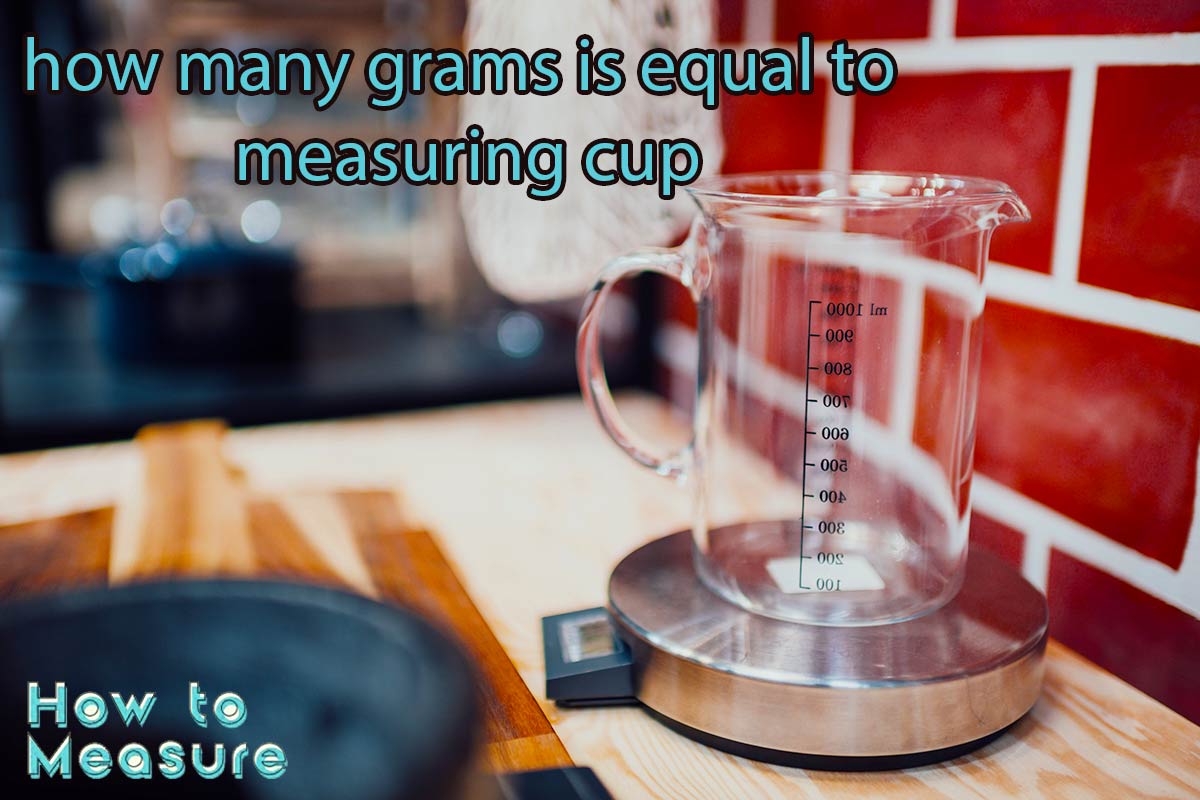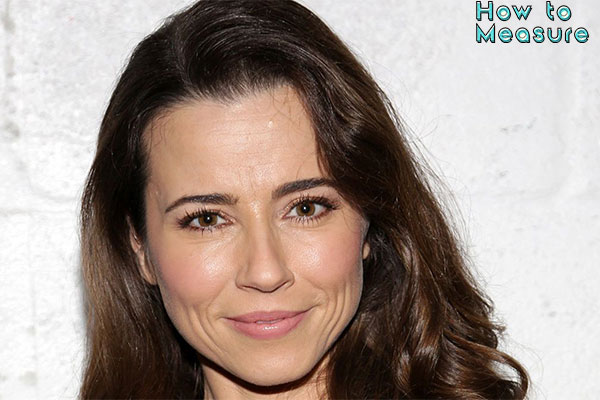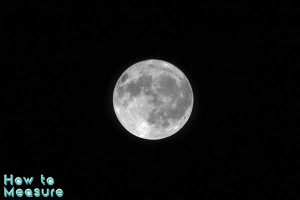When baking and cooking, correct measurements are crucial to creating a successful dish. One common question many home cooks have is how to convert measurements from a measuring cup to grams. A measuring cup is often used to measure liquid and dry ingredients, while grams are the metric system’s standard measurement unit. Understanding the conversion between a measuring cup and grams can make it easier to follow recipes, especially when using recipes from different parts of the world that use other units of measurement. This article will explain how many grams are equal to a measuring cup for both liquid and dry ingredients and provide helpful tips for accurate conversions. In the essay we in How to measure will talk more about this topic.
Conversion Chart for Liquid Ingredients
When measuring liquid ingredients, it’s important to note that the amount can vary depending on the density of the liquid. Here’s a conversion chart to help you convert liquid ingredients measured in a standard U.S. measuring cup to grams:
1 cup = 236.588 mL = 236.588 grams
- 1/4 cup = 59 mL = 59 grams
- 1/3 cup = 78.8 mL = 78.8 grams
- 1/2 cup = 118 mL = 118 grams
- 2/3 cup = 158.4 mL = 158.4 grams
- 3/4 cup = 177 mL = 177 grams
- 1 tablespoon (Tbsp) = 15 mL = 15 grams
- 1 teaspoon (tsp) = 5 mL = 5 grams
Remember that these conversions are approximate and may vary slightly based on the specific liquid you’re measuring. To ensure accuracy, it’s always a good idea to use a kitchen scale for precise measurements.
Conversion Chart for Dry Ingredients
Measuring dry ingredients is more straightforward, as the amount is typically not affected by the density of the ingredient. Here’s a conversion chart to help you convert dry ingredients measured in a standard U.S. measuring cup to grams:
1 cup = 160 grams
- 1/4 cup = 40 grams
- 1/3 cup = 53 grams
- 1/2 cup = 80 grams
- 2/3 cup = 107 grams
- 3/4 cup = 120 grams
- 1 tablespoon (Tbsp) = 15 grams
- 1 teaspoon (tsp) = 5 grams
Again, these conversions are approximate and may vary slightly based on the measured ingredient. It’s important to note that some elements like flour, sugar and baking powder may settle in the measuring cup, leading to inaccurate measurements. To avoid this, using a spoon to lightly fill the measuring cup and level it off with a knife is recommended. A kitchen scale is also a valuable tool for precise measurements of dry ingredients.
Factors That Affect Conversions Accuracy
Several factors can affect the accuracy of measuring cup-to-gram conversions:
1. Ingredient density: As mentioned earlier, the density of a liquid ingredient can significantly affect conversion. This is why it’s essential to use a kitchen scale to measure the weight accurately.
2. Settling of ingredients: Ingredients like flour and sugar can settle in a measuring cup, leading to incorrect measurements. To avoid this, using a spoon to fill the measuring cup and level it off with a knife is recommended.

3. Measuring cup quality: Not all measuring cups are created equal. Some measuring cups may need to be more accurately marked, which can lead to incorrect measurements. It’s essential to use a high-quality measuring cup that is marked and has a stable base.
4. Environmental factors: Changes in temperature and humidity can affect the weight of ingredients and cause conversions to be less accurate.
By keeping these factors in mind, you can ensure that your measuring cup-to-gram conversions are accurate and consistent. While a kitchen scale may not be necessary for every recipe, it can be a helpful tool to have on hand for precise measurements.
Tips for Accurate Measurement
Here are some tips for accurately measuring ingredients using a measuring cup:
- Use a kitchen scale: A kitchen scale is the most accurate way to measure ingredients, predominantly liquid ingredients that can vary in density.
- Level off ingredients: When measuring dry ingredients, use a knife or the back of a spoon to level off the measuring cup to ensure an accurate measurement.
- Measure liquids at eye level: When measuring liquid ingredients, place the measuring cup on a flat surface and view the measurement at eye level to avoid parallax errors.
- Use appropriate measuring cups: Different measuring cups are designed for different types of ingredients. For example, use a liquid measuring cup for drinks and a dry measuring cup for dry ingredients.
- Check the calibration of your measuring cup: Over time, measuring cups can become less accurate. Regularly checking the calibration of your measuring cup can help ensure precise measurements.
By following these tips, you can help ensure that your measurements are accurate and your recipes turn out just as you intended. With the right tools and techniques, you’ll be able to measure ingredients confidently and create delicious dishes every time.
Common Conversion Mistakes to Avoid
it’s only sometimes the most accurate way to measure ingredients. A kitchen scale is the best way to ensure precise measurements.
1. Not leveling off dry ingredients: When measuring dry ingredients like flour and sugar, it’s essential to level off the measuring cup with a knife or the back of a spoon. This will help ensure that you add only a little or little ingredient.
2. Using the wrong measuring cup: Different measuring cups are designed for different types of ingredients. For example, you should use a liquid measuring cup for beverages and a dry measuring cup for dry ingredients.
3. Not measuring liquids at eye level: When measuring liquids, it’s essential to place the measuring cup on a flat surface and view the measurement at eye level to avoid parallax errors.
4. Not accounting for the measuring cup size: Different countries have different measuring cups. Use the correct measuring cup for your recipe, and check the conversion chart for accurate measurements.
By avoiding these common mistakes, you can help ensure that your measuring cup-to-gram conversions are accurate and your recipes turn out just as you intended. With attention to detail and the right tools, you’ll be able to measure ingredients confidently and create delicious dishes every time.
Importance of Consistent Measurements in Cooking and Baking
Consistent measurements are essential in cooking and baking for several reasons:
- Recipe replication: Accurate measurements ensure that you can replicate a recipe precisely each time you make it. This is especially important in baking, where precision is critical to achieving the desired outcome.
- Consistency in taste and texture: Consistent measurements help ensure that the taste and texture of a dish remain the same each time you make it. Slight variations in ingredient measurements can lead to significant differences in the final product.
- Recipe scaling: Accurate measurements also make it easier to scale a recipe up or down depending on the number of servings you need.
- Food safety: Consistent measurements can also help ensure food safety by preventing the overuse or underuse of ingredients like salt or spices, which can significantly impact a dish’s flavor and security.
Using a kitchen scale and paying attention to measurements can help ensure that your recipes turn out the same way each time you make them. This can also help you adjust recipes more efficiently and improve your cooking and baking skills.
Conversion Between Different Measurement Units (teaspoons, tablespoons, ounces, etc.)
Converting between measurement units like teaspoons, tablespoons, ounces, etc., can be confusing, but it’s important to understand these conversions to make recipes accurately. Here’s a handy conversion chart to help:
1 teaspoon = 5 milliliters 1 tablespoon = 15 milliliters 1 fluid ounce = 30 milliliters 1 cup = 237 milliliters 1 pint = 473 milliliters 1 quart = 946 milliliters 1 liter = 1000 milliliters 1 ounce = 28.35 grams 1 pound = 453.59 grams
It’s important to note that these conversions may vary slightly depending on the country you’re in. Some countries, such as the U.S., use a slightly different measurement system, so check a reliable conversion chart to ensure accuracy.
Understanding these conversions allows you to convert recipes and adjust recipe measurements more easily. With a bit of practice, you’ll be able to convert between different measurement units with ease.
How to Use Measuring Cups for Best Results?
Measuring cups can be a helpful tool in the kitchen, but it’s essential to use them correctly to achieve the best results. Here are some tips for using measuring cups for the best results:
1. Use a kitchen scale: While measuring cups are convenient, they’re not always the most accurate way to measure ingredients. For the best results, use a kitchen scale whenever possible.
2. Use the right measuring cup: Different measuring cups are designed for different types of ingredients. For example, use a liquid measuring cup for drinks and a dry measuring cup for dry ingredients.
3. Measure liquids at eye level: Place the measuring cup on a flat surface and view the measurement at eye level to avoid parallax errors.
4. Level off dry ingredients: When measuring dry ingredients like flour and sugar, use a knife or the back of a spoon to level off the measuring cup. This will help ensure that you add only a little or little ingredient.

5. Check the conversion chart: Different countries have a different size measuring cups. Use the correct measuring cup for your recipe, and check the conversion chart for accurate measurements.
By following these tips, you can help ensure that your measuring cup measurements are accurate and your recipes turn out just as you intended. Whether you’re a seasoned cook or just starting, these tips can help you improve your cooking and baking skills and achieve delicious results every time.
Advantages of Using a Kitchen Scale Instead of Measuring Cups
Using a kitchen scale instead of measuring cups can provide several benefits, including:
1. Increased accuracy: Kitchen scales provide a more accurate measurement of ingredients than measuring cups, which can vary in size and are often prone to errors.
2. Consistency: Using a kitchen scale helps ensure consistency in your cooking and baking by allowing you to measure ingredients precisely each time you use them.
3. Time-saving: With a kitchen scale, you can quickly and easily measure multiple ingredients simultaneously, saving time compared to measuring cups for each element.
4. Better portion control: By using a kitchen scale, you can more easily control the portions of ingredients in your recipes, which can help you maintain a healthy diet or achieve specific dietary goals.
5. Easier recipe scaling: A kitchen scale makes it easier to scale recipes up or down depending on the number of servings you need. This can save time and ensure that your recipes turn out just as you intended.
Overall, using a kitchen scale instead of measuring cups can provide a more accurate, consistent, and efficient way to measure ingredients in your cooking and baking. Whether you’re an experienced cook or just starting, a kitchen scale is a valuable tool to have in your kitchen.
Frequently Asked Questions About Measuring Cup-To-Gram Conversion
Here are some frequently asked questions about measuring cup-to-gram conversion:
1. What is the difference between a dry measuring cup and a liquid measuring cup? A dry measuring cup is typically made of plastic or metal and is used to measure dry ingredients like flour, sugar, or cereal. A liquid measuring cup is usually made of glass or plastic and has a handle and spout for easy pouring. It is used to measure liquids like milk, oil, or juice.
2. Can I convert between dry and liquid measuring cups? No, you cannot convert directly between dry and liquid measuring cups. They are designed for different types of ingredients and have other volumes. You need to use a specific measuring cup for each type of ingredient.
3. How do I convert grams to measuring cups? To convert grams to measuring cups, you’ll need to know the density of the ingredient you’re measuring. For example, 1 cup of all-purpose flour weighs approximately 140 grams, while 1 cup of sugar weighs around 200 grams. You can find conversion charts online that list the weight of common ingredients in grams.
4. Can I use measuring cups to measure ingredients for recipes in metric units? Yes, measuring cups can measure ingredients for recipes in metric units. However, it’s essential to use the correct measuring cup for the type of ingredient you’re measuring and to check a conversion chart to ensure accuracy.
5. Can measuring cups be used for cooking or baking in any country? Measuring cups are widely used for cooking and baking worldwide, but the size of measuring cups can vary between countries. In some countries, the size of a measuring cup is larger or smaller than in others. Using the correct measuring cup for your country and checking a conversion chart, if necessary, is essential.
These are some frequently asked questions about measuring cup-to-gram conversion. If you have any other questions, feel free to ask!
Final Thoughts
In conclusion, understanding the conversion between grams and measuring cups is crucial for accurate and consistent cooking and baking. Whether you are an experienced cook or just starting, it is vital to clearly understand the different types of measuring cups, how to use them correctly, and how to convert between grams and measuring cups.
Using a kitchen scale, you can achieve greater accuracy and consistency in your cooking and baking and avoid common conversion mistakes. However, measuring cups are still a valuable tool in the kitchen, especially for liquids and soothing ingredients that are difficult to measure with a scale.
In the end, the most important thing is to use the correct measuring tool for the ingredient you are measuring and to check conversion charts when necessary. With the right tools and knowledge, you can create delicious and consistent dishes every time.











